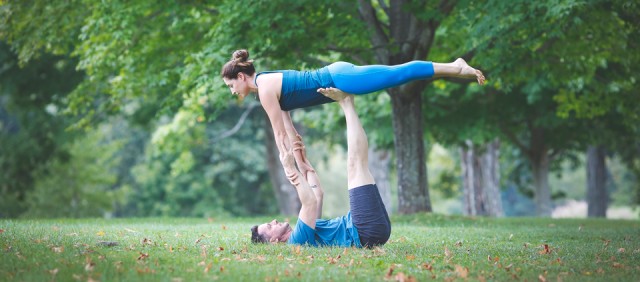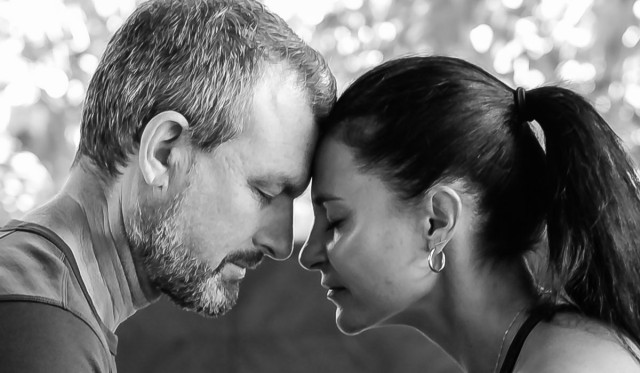What’s the Difference Between Acro Yoga and Partner Yoga?

I am often asked this question, and this is my reply:
Acro yoga uses partner inversions as the basis of the practice. My style of partner yoga uses inversions as peak postures. As in individual practice, students explore these postures once they have achieved some proficiency and comfort on the mat.
Although my experience with acro yoga is limited, I have enjoyed it and learned things that I include in my own partner yoga practice. For me, the most important element—whether it's called partner yoga or acro yoga—is the quality of presence that the practitioners hold, particularly when doing postures where there is a heightened possibility of injury.
The purpose of all yoga is to calm and soothe our bodies and beings, returning us to our innate wholeness, the part of our being that has been untouched by any trauma that we may have experienced in our lifetime. When inverted postures are practiced with a high degree of presence and awareness, there’s a vast potential for the release of trauma. But when practiced haphazardly, without awareness, these same postures can reignite traumatic memories and actually create more trauma in our nervous systems.
In my experience, partner inversions are shamanic, in that they have the potential to bypass the conscious mind and take us directly into communication with our subconscious. They literally bring us into altered states of consciousness, where transformation happens.
In the shamanic practice of soul retrieval, the practitioner travels with the support of a guide to unexplored realms. There they discover and reclaim lost or fragmented aspects of themselves. Over years of teaching these practices, I have witnessed this happen many times during inverted partner poses. People consciously place themselves into positions in which their entire worldview is literally turned upside down. If they are willing to remain open to this process—and even more importantly, feel all the feelings that arise—there is an opportunity for profound shifts to occur.
Often, people look at these practices and believe they're not capable of doing them. One woman who came to a workshop with me was 75 years old and had recently lost her husband of many years. She had signed up for the weekend, which was based around Savasana (Corpse pose), literally to decide whether she wanted to live or die. On the final day, I demonstrated Hanging Inversion, moving into Flying Posture.
“I’ll never be able to do this,” she said, tears rolling down her face.
Well she did do it, both as a base and as a flyer—and she came out of the pose exclaiming, “I want to live!"
This is the power of consciously placing our body into positions that shake up our known reality. Repressed emotions come rushing to the surface; we face our fears, grief, and uncertainty; and we come out the other side more in touch with our wholeness and more free to express who we really are. With presence, willingness, and clear guidance, most of us are able to experience these seemingly advanced postures and the liberation they offer us. The principles we practice from a foundation of trust, compassion, and support are integrated into our bodies and our lives.
Elysabeth Williamson, E-RYT 500, internationally recognized as the foremost authority on partner yoga, is author of The Pleasures and Principles of Partner Yoga.
Full Bio and Programs
